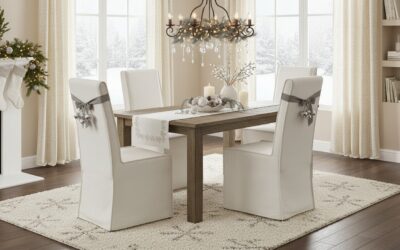An Interview with Justin Bowen, Product Content Specialist at AVB BrandSource
Justin is an e-commerce and online merchandising expert with extensive experience managing high-volume product data and introducing innovative processes in the furniture retail industry. He began his career with The Great American Home Store (later rebranded as RTG locations in 2023), during a period of rapid growth, overseeing product catalog management and visual merchandising for roughly 100 brands and 3500 SKUs. He created all content in-house, often photographing 30-50% of their assortment with up to 50% item turnover annually, ensuring a constant flow of new product shoots and edits. They also produced 90-second voiced collection videos for seating, dining, and bedroom sets.
In his current role at AVB BrandSource, he and his team manage more than half a million furniture and mattress SKUs across hundreds of brands. With a data-driven, results-focused approach, Justin helps retailers achieve e-commerce success. We spoke with Justin to learn about the visual strategies he believes drive results for retailers.
Visual Merchandising Challenges for Retailers
Q: What are the biggest challenges retailers face with online visual merchandising?
A: The core challenge is that furniture photography is inherently difficult due to size and logistics. Many retailers don’t have comprehensive photography across their inventory – they might cover some products but not all.
This creates several problems:
- Makes your site appear to have limited selection
- Creates perception mismatches with actual inventory
- Makes products harder to sell without visual marketing support
- Places complete dependency on sales teams and visual merchandising
Without good imagery, customers can’t discover products. They won’t click, won’t ask about items, won’t visit to see them. We could measure this impact directly – improving photography or simply adding products to the website often meant the difference between an item selling or not selling at all.
The bigger issue is that sales training in the furniture industry is often insufficient. When marketing imagery can’t do the heavy lifting, you’re relying entirely on whether the product and its merchandising sells itself and how well your sales team performs.
Strategies for Closing Photography Gaps
Q: What strategies do you see marketing teams using to address photography gaps?
A: Success requires tight collaboration between marketing and merchandising teams. Management must set the tone that departments work together rather than operating in silos.
It’s critical for Marketing to take the lead and create internal processes that allow the team to be self-sufficient. By reducing dependencies on other teams, Marketing will have greater success. Key elements of those internal processes include:
- Inventory tracking: Know when SKUs are created and when products arrive automatically
- Communication systems: Connect marketing, merchandising, floor, and warehouse teams
- Internal photography capabilities: Even simple setups like a wall or backdrop in the warehouse can be sufficient for retailers looking to close photography gaps
- Flexible scheduling: Sometimes you only get an hour before products go to the showroom floor. Narrow time windows mean coordination between teams is critical. Marketing must anticipate and respond to changes with item arrival, scheduled unboxing and preparation times. Warehouse and merchandising teams needs to know marketing needs photos, and marketing needs to be set up for fast turnarounds using in-house resources
The most successful retailers have systematic approaches. They communicate photography needs across teams and establish clear timelines. Sometimes you’re shooting in suboptimal conditions, but tools like PyxMagic can transform those images into professional-quality results.
Product Page Imagery – Best Practices for Visual Merchandising
Q: In your experience, what imagery makes for successful product detail pages (PDPs)?
A: While there’s discussion about 360-degree views and AR/VR, these technologies still have barriers to entry and aren’t cost-effective and scalable across a retailer’s entire assortment of diverse lineups. Focus on what you can implement consistently: photography and video.
Essential image requirements:
- 8-12 photo suite: Include multiple angles and settings, such as silhouettes, alt shots including three-quarter, front, side and back views, and lifestyle images which place products in realistic, styled environments.
- Scale indication: Customers need to understand product size. This can be communicated by including a room scene that accurately shows scale, dimension images and relative scale mockups.
- Detail shots: Texture, materials, features
- Functionality displays: Open storage, removable cup holders, power outlets, cleaning capabilities
Scale is particularly critical. I recall a rustic cabinet that appeared small online but was actually seven feet tall and five feet wide. While dimension specifications are always helpful, customers need visual context – room scenes with familiar objects like TVs, lamps, or furniture provide instant scale understanding.
Think about the in-store experience: customers sit on sofas, feel arms, open storage compartments, check inputs and features. Your imagery should answer the same questions customers would investigate physically.
Learn more about building a PDP page that converts>>>
Insights on Image Strategy for Marketing Channels
Q: What imagery & visual merchandising strategies have you found successful for different marketing channels?
A: You can’t apply universal rules – success requires experimentation and iteration. What works for one retailer may not work for another. So given that big caveat, I can share some of what I’ve learned through trial and error.
Social media insights:
- Customers want to see your showroom and merchandising approach
- Show how you display products, not just the products themselves. This means showing in-store vignettes!
- Raw, authentic photos or handheld video from inside your showroom often outperform polished imagery
- Our experience, after experimenting, was that younger audiences engaged more with decor content, which led them to furniture purchases – but this isn’t a steadfast rule. Experimentation is key to discovering insights like these for your audience.
Search marketing:
- More professional photography performs better
- Lifestyle images often generate better results than solo product shots
- Google Shopping generally prefers silhouette images
- Unique imagery helps combat image search competition
Video strategy:
- Place videos in front of images in the carousel/thumbstrip on product pages for 10x increase in views
- Customers want detailed product videos when they’re interested, not before
- Video can simulate AR/VR benefits while showing scale, positioning, and material qualities like leather sheen
The key is continuous testing and optimization. Be iterative, creative, and willing to try approaches that might seem counterintuitive. Your experiments and results matter more than copying what worked for others.
Integrating PyxMagic for Image Creation
Q: How does AVB BrandSource use PyxMagic in its visual merchandising process today?
A: Even working directly with vendors, we frequently receive imagery that doesn’t meet our platform standards. PyxMagic helps us in several key areas:
- Resolution enhancement: Converting low-resolution images to higher quality
- Background management: Removing or adding backgrounds for lifestyle scenes
- Standardization: Creating consistent angles (we prefer three-quarter shots) and lighting across hundreds of vendors
- Variation creation: Generating multiple shot types from single vendor images
The tool’s simplicity is crucial. We’re training existing staff – data entry, sales staff, and logistics teams, not photo editors. Anyone can use PyxMagic to achieve professional results. This is especially valuable for retailers who don’t have dedicated photographers but need floor staff or sales people to capture quick product shots using a cell phone. With PyxMagic, we can use a floor person who is unboxing products or a sales person with downtime to snap the shots we need.
Q: Have you seen measurable time-to-market improvements?
A: Absolutely. Consider a dining set in a room scene – removing the background in Photoshop, even with my two decades of experience, would take considerable time, especially with complex pieces like spindle-back chairs. With PyxMagic, we accomplish the same result in seconds rather than thirty minutes per image.
This speed dramatically expands the addressable portion of our catalog. When you’re managing half a million products, efficiency becomes essential for meaningful impact.
BrandSource & The Path to 30 Initiative
Q: What types of retailers do you work with at AVB BrandSource?
A: We serve a broad spectrum, from single-store operations that have been family-owned for generations to top 100 retailers. The retailers who benefit most are those lacking internal resources who feel overwhelmed by digital requirements.
Our advantage is cost-effective, sophisticated solutions with continuous improvement. Whether it’s a mom-and-pop store without a marketing department or a large retailer wanting to compete with big boxes, we help them dominate their markets through integrated tools and consistent marketing efforts.
Q: Can you explain AVB BrandSource’s Path to 30 program?
A: Path to 30 is based on our analysis of big box retailers who’ve shifted their business models to generate approximately 30% of sales online. We believe this target is achievable for our retailers.
The program addresses the technical, procedural, and logistical requirements needed to reach this goal. Many retailers, especially smaller operations, lack internal subject matter experts for digital transformation. We provide the roadmap and tools.
Our integrated technology suite includes:
- LINQ: Product system platform
- ALTA: Website frontend
- ARC: Point of sale solution designed with furniture retailers in mind
- HUB: Sales CRM with tablet and iPad tools for sales teams
- KIOSQ: Shoppable endless aisle displays
Success requires more than just turning on a catalog – you need merchandising, marketing strategy, and systematic execution.
To learn more about BrandSource and their Path to 30 program, visit https://www.joinbrandsource.com/new-for-you-initiatives-for-members/






0 Comments